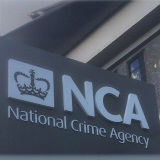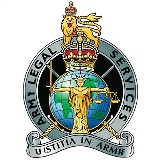*/

Rekha Kodikara explores the positive steps being taken to enable the future Treasury Counsel team to be diverse and inclusive
The seminal historian, Yuval Noah Harari wrote in Homo Deus, ‘the single greatest constant of history, is that everything changes’. I tend to agree with him.
I have been selected, along with seven other barristers/solicitor-advocates, onto the Treasury Counsel Pathway – the first of its kind. The purpose of the Pathway is to broaden the opportunities for members of the profession and to achieve greater diversity. It is important for two main reasons. First, it recognises that talent and ability, as an advocate, are not prescribed to a specific group of people but are present in anyone who works hard and is committed to excellence. The second reason is that it reinforces a commitment to ensure that prosecuting advocates reflect the communities they serve. In trying to achieve these two objectives, positive steps had to be taken so that the future team that make up Treasury Counsel is diverse and inclusive.
I was called to the Bar in November 2000. It is a second career. My first degree was in social anthropology and international development at the University of Sussex. I spent the first ten years, after graduating, campaigning for the rights of women and young people in the developing world. I was fortunate enough to have been invited to speak at international conferences, including ones organised by the United Nations, on women’s rights, poverty and social inclusion. My career in international development led me to qualify as a lawyer where I believed I could apply a legal framework to social change. I undertook the conversion course which was followed with an LLM from the University of London. My background contributed towards being selected for pupillage in human rights sets. It was an exciting time – with the Human Rights Act – as it inspired novel and thought-provoking arguments on the scope of individual rights.
I joined the Crown Prosecution Service (CPS) in 2005 when it expanded its advocacy programme into the Crown Courts. I became an employed barrister for various reasons – one being that the family-friendly policies of the CPS meant that I could personally raise my son who was less than a year old. I did not have much external help as most of my family were in Malaysia (my country of origin) and my parents were getting older. I became a Crown Advocate (CA) in 2006 after completing the two-part assessed residential course. I have never looked back. Given the volume and variety of criminal cases at the CPS, the opportunities for learning and developing are immense. The CPS has changed radically from when I joined and compared to many institutions, whether private or public, it is truly diverse and progressive. In 2018, I was appointed the Crown Advocate Liaison for Snaresbrook Crown Court where I worked alongside the court and judiciary to improve our service delivery. I left that post last year after a successful application as a Grade 4 advocate.
I would never have considered applying for the role of Treasury Counsel (TC) without the Pathway. It reaches out to minority advocates and to those from sets of chambers from which current Treasury Counsel are not members. In doing so, it seeks to identify and support advocates from underrepresented groups, or who may not, ordinarily, see themselves as Treasury Counsel material. It has the support of the Attorney General and Director of Public Prosecutions and is being led by Barry Hughes, the Chief Crown Prosecutor for CPS London North, and Oliver Glasgow QC, First Senior Treasury Counsel. It is a new project and its success will depend very much on the input of its participants. The Pathway is open to advocates from non-TC sets with a minimum seven years’ advocacy experience – currently operating at CPS Advocate Panel level 3 or the equivalent for defence practitioners. There is no guarantee of an appointment as Treasury Counsel or as a Monitoree upon completion of the scheme.
The Pathway lasts for 12 months and has a structured programme in place. It provides one-to-one mentoring with Junior Treasury Counsel and a series of workshops. It also includes job shadowing opportunities. Furthermore, those on the Pathway will be able to engage in conversations with stakeholders such as the judiciary, former Treasury Counsel, the CPS and the Office of the Attorney-General. The intention is to guide those on the Pathway to be in a good position to apply for the role of a Monitoree.
The application form for the Pathway was very brief – three boxes of 250 words each. Apart from the obvious questions on experience and qualifications, there was a question about a pivotal moment in my career. I knew the answer straightaway: a near disaster in a very high-profile case. I can only assume that the description I gave of the actions I took to rescue the situation and the lessons learnt persuaded the panel.
The CPS website has a page on Treasury Counsel. I never read it until now. I guess it must be due to my own perception of those that were appointed. Thirteen years ago, I was prosecuting as a junior in a conspiracy to murder at the Central Criminal Court. I did not know that the ‘the Room’ (rooms actually) where Treasury Counsel sat were in the CPS corridor. I recall seeing a tower of old Archbolds stacked on the floor by the door of one room – as if its occupant had either authored its contents or read every page. It felt intimidating. Treasury Counsel were, at the time, made up largely of men. I formed the view that they carried an inaccessible confidence that came with being instructed in some of the most high-profile cases in the country. We were worlds apart. I could not imagine even saying hello, without getting a lump in my throat.
It now feels like a long time ago but I have since never discarded a single Archbold. Whether I build a tower, or use them as door stoppers, will remain to be seen. This career has been a journey filled with both challenges and surprises. Most of the challenges were due to the often, unfair perception that in-house advocates, particularly women from ethnic minorities, were not equal to their self-employed counterparts.
Whatever the outcome for me on the Pathway, I am grateful to be part of this effort to make positive changes to the selection of Treasury Counsel.
The other Pathway members are: Amy Nicholson (6 Pump Court); Denise Breen-Lawton (St Paul’s Chambers, Leeds); Feryal Ertan (9 King’s Bench Walk, London); Micaila Williams (Optimus Chambers, Northampton); Nadeem Holland (the 36 Group, London); Soheil Khan (Park Square Barristers, Leeds); and Suki Dhadda (2 King’s Bench Walk, London). The next opportunity to apply to join the Treasury Counsel Pathway will be in late 2022. Click here for more details.

The seminal historian, Yuval Noah Harari wrote in Homo Deus, ‘the single greatest constant of history, is that everything changes’. I tend to agree with him.
I have been selected, along with seven other barristers/solicitor-advocates, onto the Treasury Counsel Pathway – the first of its kind. The purpose of the Pathway is to broaden the opportunities for members of the profession and to achieve greater diversity. It is important for two main reasons. First, it recognises that talent and ability, as an advocate, are not prescribed to a specific group of people but are present in anyone who works hard and is committed to excellence. The second reason is that it reinforces a commitment to ensure that prosecuting advocates reflect the communities they serve. In trying to achieve these two objectives, positive steps had to be taken so that the future team that make up Treasury Counsel is diverse and inclusive.
I was called to the Bar in November 2000. It is a second career. My first degree was in social anthropology and international development at the University of Sussex. I spent the first ten years, after graduating, campaigning for the rights of women and young people in the developing world. I was fortunate enough to have been invited to speak at international conferences, including ones organised by the United Nations, on women’s rights, poverty and social inclusion. My career in international development led me to qualify as a lawyer where I believed I could apply a legal framework to social change. I undertook the conversion course which was followed with an LLM from the University of London. My background contributed towards being selected for pupillage in human rights sets. It was an exciting time – with the Human Rights Act – as it inspired novel and thought-provoking arguments on the scope of individual rights.
I joined the Crown Prosecution Service (CPS) in 2005 when it expanded its advocacy programme into the Crown Courts. I became an employed barrister for various reasons – one being that the family-friendly policies of the CPS meant that I could personally raise my son who was less than a year old. I did not have much external help as most of my family were in Malaysia (my country of origin) and my parents were getting older. I became a Crown Advocate (CA) in 2006 after completing the two-part assessed residential course. I have never looked back. Given the volume and variety of criminal cases at the CPS, the opportunities for learning and developing are immense. The CPS has changed radically from when I joined and compared to many institutions, whether private or public, it is truly diverse and progressive. In 2018, I was appointed the Crown Advocate Liaison for Snaresbrook Crown Court where I worked alongside the court and judiciary to improve our service delivery. I left that post last year after a successful application as a Grade 4 advocate.
I would never have considered applying for the role of Treasury Counsel (TC) without the Pathway. It reaches out to minority advocates and to those from sets of chambers from which current Treasury Counsel are not members. In doing so, it seeks to identify and support advocates from underrepresented groups, or who may not, ordinarily, see themselves as Treasury Counsel material. It has the support of the Attorney General and Director of Public Prosecutions and is being led by Barry Hughes, the Chief Crown Prosecutor for CPS London North, and Oliver Glasgow QC, First Senior Treasury Counsel. It is a new project and its success will depend very much on the input of its participants. The Pathway is open to advocates from non-TC sets with a minimum seven years’ advocacy experience – currently operating at CPS Advocate Panel level 3 or the equivalent for defence practitioners. There is no guarantee of an appointment as Treasury Counsel or as a Monitoree upon completion of the scheme.
The Pathway lasts for 12 months and has a structured programme in place. It provides one-to-one mentoring with Junior Treasury Counsel and a series of workshops. It also includes job shadowing opportunities. Furthermore, those on the Pathway will be able to engage in conversations with stakeholders such as the judiciary, former Treasury Counsel, the CPS and the Office of the Attorney-General. The intention is to guide those on the Pathway to be in a good position to apply for the role of a Monitoree.
The application form for the Pathway was very brief – three boxes of 250 words each. Apart from the obvious questions on experience and qualifications, there was a question about a pivotal moment in my career. I knew the answer straightaway: a near disaster in a very high-profile case. I can only assume that the description I gave of the actions I took to rescue the situation and the lessons learnt persuaded the panel.
The CPS website has a page on Treasury Counsel. I never read it until now. I guess it must be due to my own perception of those that were appointed. Thirteen years ago, I was prosecuting as a junior in a conspiracy to murder at the Central Criminal Court. I did not know that the ‘the Room’ (rooms actually) where Treasury Counsel sat were in the CPS corridor. I recall seeing a tower of old Archbolds stacked on the floor by the door of one room – as if its occupant had either authored its contents or read every page. It felt intimidating. Treasury Counsel were, at the time, made up largely of men. I formed the view that they carried an inaccessible confidence that came with being instructed in some of the most high-profile cases in the country. We were worlds apart. I could not imagine even saying hello, without getting a lump in my throat.
It now feels like a long time ago but I have since never discarded a single Archbold. Whether I build a tower, or use them as door stoppers, will remain to be seen. This career has been a journey filled with both challenges and surprises. Most of the challenges were due to the often, unfair perception that in-house advocates, particularly women from ethnic minorities, were not equal to their self-employed counterparts.
Whatever the outcome for me on the Pathway, I am grateful to be part of this effort to make positive changes to the selection of Treasury Counsel.
The other Pathway members are: Amy Nicholson (6 Pump Court); Denise Breen-Lawton (St Paul’s Chambers, Leeds); Feryal Ertan (9 King’s Bench Walk, London); Micaila Williams (Optimus Chambers, Northampton); Nadeem Holland (the 36 Group, London); Soheil Khan (Park Square Barristers, Leeds); and Suki Dhadda (2 King’s Bench Walk, London). The next opportunity to apply to join the Treasury Counsel Pathway will be in late 2022. Click here for more details.

What’s it really like to work in the National Crime Agency’s in-house legal team? TM, a lawyer in the NCA’s Financial Disruptions Litigation team, shares a day in her life

By the Chartered Governance Institute UK Ireland

Q and A with Major Susie Brooke, Legal Officer in Army Legal Services

Have you considered being a barrister in the British Army? Here’s an insight into a career in Army Legal Services

Clare describes her journey from Crown Prosecution Service legal trainee to Senior Crown Prosecutor, a typical ‘day in the life’ and the inspiration she draws from her career

What's it like being a legal trainee at the Crown Prosecution Service? Amy describes what drew her to the role, the skills required and a typical day in the life